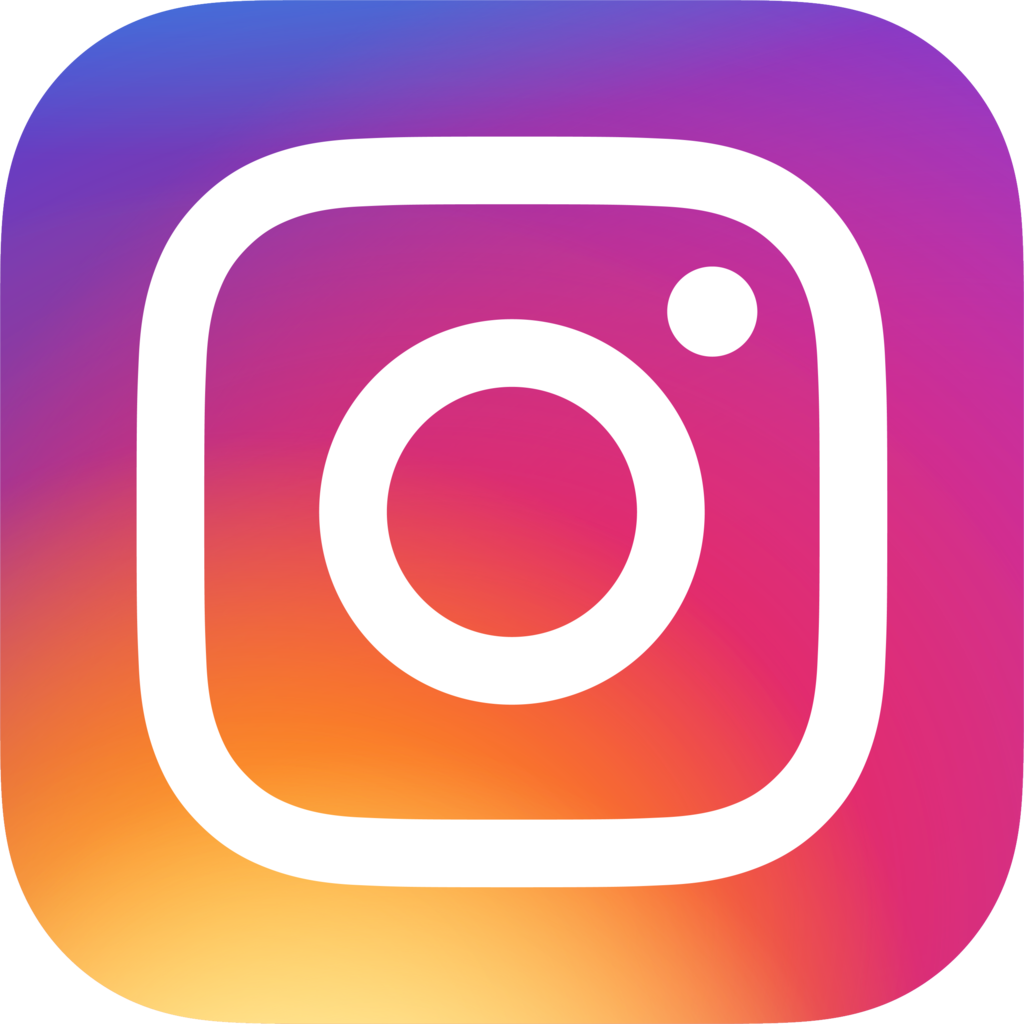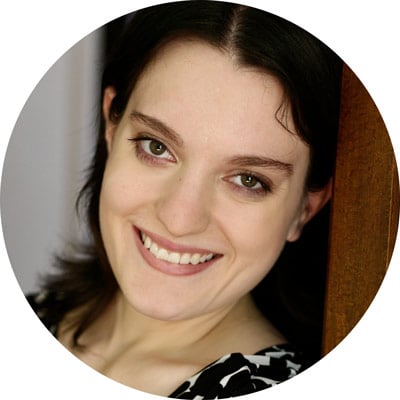
A huge number of books exist out there, ready and waiting for you to read them. Whether you prefer manga or ancient, epic poems, reading is great for all sorts of reasons.
What follows is a list of highly beneficial books to read in high school (or after!). These are remarkable books—books that made history, books that challenge societal perceptions of the world, and books that are quite simply interesting and moving. The books are presented in alphabetical order, and a short description is given for each book, as well an explanation of why it is worth reading.
Why Is Reading Important?
Why should you read these books? Why should you read at all for that matter? Reading is essential to communication, especially in an era of emails and texting. Beyond even that, though, reading has an array of crucial purposes. It will help improve your grades and test scores. You'll learn about other places, other times, and other cultures. You'll encounter issues you can relate to—issues that speak to you and challenge you to think and feel in new ways. You will grow, empathetically and intellectually. Plus, you'll understand more of the references that crop up all the time in pop culture.
Below are 31 books to read in high school that will help you prepare for college and beyond.
1984 (George Orwell)
This dystopian novel by George Orwell was written 35 years before the date referenced by the title. In this book, Orwell tells a story that warns readers about the possible consequences of complacency in the face of rising dictators (think Hitler and Stalin) and burgeoning technology ripe for misuse. He describes a world where everything is monitored, right down to citizens’ thoughts, and where any opposition to the ruling class is punishable by extreme measures. The oft-encountered quote, "Big Brother is watching," finds its origin in this novel.
The Adventures of Huckleberry Finn (Mark Twain)
This sequel to Mark Twain’s The Adventures of Tom Sawyer is much graver in nature than its predecessor. There are still plenty of good antics worthy of a laugh, but it concerns itself largely with a young boy’s attempt to escape severe family dysfunction and the moral implications of his taking an escaped slave as a companion on his adventure down the Mississippi River. Readers should be warned that the "n-word" is used liberally throughout the novel, which tends to be jarring to many a modern ear.

Mark Twain wants you to read his novel(s).
The Awakening (Kate Chopin)
Set in the Creole culture of the late 1800s, this novel by Kate Chopin details one woman’s process of becoming aware of herself. At the time, women were essentially property, and they were expected to act in demure and socially acceptable ways. As the protagonist "awakens" to her emotional and sexual needs, as well as the ultimate truth of her own independence, all sorts of problems ensue. The novel examines the balance between self-respect and selfishness.
The Bell Jar (Sylvia Plath)
This autobiographical novel by poet Sylvia Plath explores the deep, dark reality of mental illness. The protagonist, Esther, a stand-in for Plath herself, is a college student exploring her talents, interests, and sexuality as she descends into an unsettling spiral of mental instability. It is essential for students to understand the seriousness of mental illness as it is so earnestly portrayed in this book.
Black Rain (Masuji Ibuse)
Black Rain, by Masuji Ibuse, is about the very immediate, human consequences of the atom bombs dropped on Hiroshima and Nagasaki. It follows a small family of survivors, detailing what happened to them during the days of the bombing and what the effects are some years later. The book adopts a gentle, subtle tone, and yet it is not afraid to delve into very explicit and challenging topics related to the bombings.
Bless Me, Ultima (Rudolfo Anaya)
This semi-autobiographical novel by Rudolfo Anaya contains a healthy dose of magical realism and is considered a staple of Chicano literature. It combines Spanish, Mexican, and Native American influences, showing openly the ways in which these forces within the protagonist’s life come into conflict. Young Antonio is growing up in a world that leaves him with more questions than answers: major questions about life and death, good and evil, and so on. These issues seem too big for his six-year-old mind, and yet he grapples with them valiantly through the end of the novel.

Antonio has lots of questions surrounding his faith traditions.
Brave New World (Aldous Huxley)
In Brave New World, Aldous Huxley explores themes similar to those found in Orwell’s 1984. Huxley wrote this novel earlier than Orwell wrote his, and yet both deal with dystopian concepts. In particular, Huxley balances utopian and dystopian interpretations of a world that is highly controlled, easily manipulated, and extremely dysfunctional, ready to fall apart at any provocation. There are insiders of and outsiders to this world, and each character views and interacts with the society in a different light.
Bury My Heart at Wounded Knee (Dee Brown)
Dee Brown covers a lot of historical ground in this book. In it, Brown describes the history of European Americans as they interact with (and slaughter) the Native Americans who already inhabit what they claim as their country. It’s an infuriating and accurate tale of mistreatments and abuses, as well as the unfortunate decline of a noble people trying to defend their established way of life. It’s essential for students to understand this part of United States history.
The Catcher in the Rye (J. D. Salinger)
This bold and controversial novel by J. D. Salinger centers around ideas including adolescent sexuality and relationships. The protagonist is constantly bouncing around from person to person, place to place, activity to activity. Critics were greatly offended by Salinger’s frank discussions of sexual matters and his generally very casual style. This book is an important read in part because of its direct relevance to struggling adolescents and the issues they face.
The Crucible (Arthur Miller)
Arthur Miller wrote this tragic play in the early 1950s. While it is somewhat loosely based on the Salem witch trials of 1692, and while it is likely intended as an allegory to McCarthy’s rooting out of suspected Communists at the time of the play’s writing, the issues it touches on are much more broadly applicable. This is an important dramatic work on how hysteria, cruelty, and ignorant gullibility destroy communities.
Bonus: Studying The Crucible for school and struggling? Check out ourThe Crucible study guides here!

There are lots of accusations of creepy stuff in The Crucible.
The Diary of a Young Girl (Anne Frank)
Anne Frank’s published diary is different from a typical literary work. It’s a true account of the life of one Jewish girl during the Holocaust, and, while Anne Frank wrote some passages with publication in mind, others she did not. When the book was first published, many passages that her father, Otto Frank, found too long, unflattering, or inappropriate were excluded. Today, the book is available with all material included. Gaining some understanding of this horrific genocide is crucial to students.
Fahrenheit 451 (Ray Bradbury)
Books are on trial in this astounding work by Ray Bradbury. Set in yet another dystopian future where firemen are employed to burn books and the houses that contain them, Fahrenheit 451 tells the story of a fireman who begins to wonder what books have to offer. This novel is an ode to literacy, and, while it has its tragic moments, it ultimately leaves readers with a message of hope.
Flowers for Algernon (Daniel Keyes)
Daniel Keyes writes a very warm and human form of science fiction in Flowers for Algernon. The novel tells the story of a man considered mentally retarded who is selected for an intelligence-enhancing surgery. The book follows the effects, both positive and negative, that come from the sudden change in his I.Q. This is a moving read for students who wish to understand how intelligence plays into our humanity.
For Colored Girls Who Have Considered Suicide When the Rainbow is Enuf (Ntozake Shange)
In For Colored Girls…, Ntozake Shange creates choreopoetry (poetry meant to be performed with movement and dance) that covers important themes of race, gender, abuse, and perseverance. It’s largely a deep and dark poem, but it contains a message of hope. This is an awesome opportunity for readers to get exposure to poetry in a very relevant and theatrical form.

The rainbow contains all sorts of symbolism.
Frankenstein (Mary Shelley)
First off, let’s all be clear: as some will already know, Frankenstein is not a monster. Rather, the very human Victor Frankenstein is responsible for creating what we recognize as the monster from the story; the creature itself is nameless. Mary Shelley wrote this Gothic thriller in the early 1800s, and yet we remain fascinated by this tale of playing God and facing the consequences. It’s an eerie tale with themes that run deep.
The Grapes of Wrath (John Steinbeck)
John Steinbeck’s masterful The Grapes of Wrath centers around the Great Depression and the Dust Bowl in American history. It’s a story of hope and despair, moving from one to the other and back again seamlessly throughout the novel. While loaded with biblical allusions, it is not heavy-handed with them, and the writing is often praised as realistic and beautiful.
Great Expectations (Charles Dickens)
Great Expectations, by Charles Dickens, is a staple of English literature. It’s one of his most autobiographical works; it tells the story of a young boy, orphaned and poor, who ultimately experiences a drastic change in his fortunes. In addition, he learns much about love, trust, and relationships in this coming-of-age novel. As the title suggests, the novel also contains discussions of hope, disappointment, and expectations.
The Great Gatbsy (F. Scott Fitzgerald)
F. Scott Fitzgerald wrote in The Great Gatsby a novel that in many ways closely reflected his own experience. The decadence of the Jazz Age was, as is revealed in the novel, both enticing for many and revolting for some. The Great Gatsby follows the quest of a wealthy young man to win back the love of his life by extravagant displays of riches and social connections. As the plot builds to its climax, readers, along with Gatsby's simpler, humbler friend and neighbor, are left to ponder the passing of an era in American history.
BONUS: Reading The Great Gatsby for school but finding it hard to keep track of all the characters? We have several study guides that might be able to help, including our guide to all the characters in The Great Gatsby.

The Joy Luck Club (Amy Tan)
Amy Tan’s novel, The Joy Luck Club, deals with intergenerational and intercultural questions. Tan seeks to represent the Chinese-American experience while also representing issues of mother-daughter relationships and the passage of time. The book focuses on four mother and four daughters across four sections of the novel for a total of sixteen stories that come together to complete this total work.
Lord of the Flies (William Golding)
William Golding’s Lord of the Flies speaks to the evil and degenerate potential that lurks within each human. It can be interpreted religiously, politically, psychoanalytically, or any number of other ways, but the basic premise is that a group of schoolboys stranded on an island descend into grotesque savagery. It’s a disturbing story, to be sure, but one that is important to be familiar with in a world where savage instinct too often presents itself today.
The Lord of the Rings and The Hobbit (J. R. R. Tolkien)
As with any work, The Lord of the Rings and The Hobbit are not everyone’s cup of tea, but they’re hugely rewarding pleasure reading for too many fans to count. Tolkien’s masterpieces are more than just pleasure reading, though; the trilogy covers major themes of the epic struggle between good and evil, the necessity of persevering through immensely difficult ordeals, and how to apply mercy. Tolkien asks major questions about those who are evil versus those who are misguided and what we should do when our paths intertwine with any such individuals. The Hobbit is lighter and more kid-focused, but still addresses important themes.
The Odyssey (Homer)
The Odyssey is an epic poem nearly three thousand years old that’s attributed to the blind poet Homer. It tells the story of a war hero’s ten-year quest to return to his home, wife, and son. He encounters a number of varied setbacks along the way, and the trouble isn’t over when he gets home. The Odyssey deals with human interactions with the gods, bringing up questions of righteousness, wrongdoing, and pride as well as ideas of faithfulness and patience.

Odysseus was a fan of the ladies.
Oedipus Rex (Sophocles)
This play by Greek dramatist Sophocles is about a man who inadvertently kills his father and marries his mother. It’s dark subject matter, and nothing good comes of it, as you may well suspect. This another example, as in The Odyssey, of the divine tinkering with human lives and the great sin of pride.
One Flew Over the Cuckoo's Nest (Ken Kesey)
Ken Kesey documents in this work the darkest side of mental health care as it existed in the 1960s. While certainly not all mental health care was like what’s described in the book, nor is it all like that today, audiences of the novel are aghast that any care might even vaguely resemble the horrors discussed. Despite how disturbing the storyline is, it’s important for readers to recognize the vulnerability of this too often overlooked segment of society.
Pride and Prejudice (Jane Austen)
Jane Austen’s Pride and Prejudice follows a family with five daughters, all unwed, and all, due to English customs of the late 1700s and early 1800s, in need of wedding. Of the five daughters, Elizabeth is the focus of the novel, though the others are discussed aplenty. While marriage is one of the central ideas in the novel, there are plenty of other themes to be picked apart, including ones that touch on pride, prejudice, first impressions, love, misunderstanding, and manipulation. This is, all around, a classic piece of literature, and one with which to be familiar.

Next up: one of my favorites, William Shakespeare.
Romeo and Juliet or Hamlet (William Shakespeare)
William Shakespeare’s Romeo and Juliet is familiar to most people on some level: two teenagers from feuding families fall in love and ultimately sacrifice their lives to their passion. Of all of Shakespeare’s works, it's a particularly popular one to read in high school for a variety of reasons. For one thing, it deals explicitly with teenaged love, and, for another, it’s a relatively simple plot that’s nonetheless action-packed. It also opens with a shameless series of very witty dirty jokes, and such humor is scattered throughout the rest of the show. Then there’s the thematic material, which includes obedience, fate, and rash decisions, among others.
For those who don’t wish to read about teenagers mooning for each other to the point of suicide, there’s always Hamlet. This story follows a Danish prince whose father has died and whose mother has almost instantly married the father’s brother. When Hamlet discovers, via an appearance of his father’s ghost, that his uncle murdered his father, all sorts of interesting events ensue. There’s madness (real and feigned), murder, suicide, treason, and a lot of waffling over the right course of action.
As an added bonus, those who read Hamlet may wish to read Tom Stoppard’s Rosencrantz and Guildenstern Are Dead. It follows the events of Hamlet from the perspective of two minor and typically much-maligned characters. It’s also hilarious, if absolutely weird.
Slaughterhouse-Five (Kurt Vonnegut)
Slaughterhouse-Five is a fictional account of events in some ways very similar to what the author himself experienced as a prisoner of war in WWII. He writes about the atrocities humans commit upon each other, and he also mixes in a number of other concerns, some heavy, some light, such as death, aliens, and the ability to see other points in time, past or future.
Their Eyes Were Watching God (Zora Neale Hurston)
The novel Their Eyes Were Watching God by Zora Neale Hurston has been much criticized over the course of its history, and yet it stands as one of the great classics of American literature. It tells the story of a black woman who is full of zest and passion and who is passed from man to man as she goes through life. With her first husband, she is absolutely miserable; with her second husband, it’s more bearable, for a time; and with her third man, she finds happiness. The trials and tribulations she undergoes with all three make for an interesting examination of what it takes for Janie to free the strong, confident woman within.

(Not an actual representation of Janie. Same approach to life, though.)
Things Fall Apart (Chinua Achebe)
In Chinua Achebe’s Things Fall Apart, readers encounter a complex and beautifully rendered examination of life with the Igbo tribe in Africa, both before and after the white man’s interference. Okonkwo is the protagonist, and he goes through a number of difficulties that put him in the position of making distasteful decisions. Readers are left to wonder whether things are falling apart because that’s simply the way of the world or whether different decisions could have kept them together. The inevitability of change is neatly demonstrated.
To Kill A Mockingbird (Harper Lee)
Harper Lee’s To Kill a Mockingbird deals with elements of racism, courage, sympathy, understanding, and hope. It tells the story of a small town where a black man has been falsely accused of raping a white woman. The daughter of the lawyer defending the accused is the main protagonist, and another aspect of the story is her journey from bemused mockery to gentle understanding with regard to an eccentric man in the town. To Kill a Mockingbird rose to prominence during the Civil Rights Movement and remains as potent today as it ever was.
The Ugly American (Eugene Burdick and William Lederer)
The Ugly American by Burdick and Lederer is a denouncement of the American practice of sending insensitive diplomatic figures into foreign countries. Through a series of vignettes, it demonstrates American inefficiency overseas. It so impressed John F. Kennedy while he was a Democratic senator that he sent a copy to each and every one of his Senate colleagues. It can be an uncomfortable read, but a worthwhile one.
Conclusion
If you can read through these 30-odd books before you graduate high school, you'll be in a good shape, from a literary perspective.
Even if you can't read all of them, picking a few would not be a bad place to start. You might start with those that simply sound the most interesting to you, or you could look for themes in the books that relate to what you're learning in school. If you're studying McCarthyism, for instance, maybe try The Crucible; if you're studying the Holocaust, maybe try The Diary of a Young Girl.
These stories are immensely powerful. Some are newer, having instantly won their place in the pantheon of classics, while others have proven themselves by withstanding the test of time.
Readers will find that they resonate with some books more than others, and that's fine; the point is that all of these books have important messages to communicate, and I encourage readers to be open to finding out what those messages are.

Open a book, and you'll find all sorts of messages! Usually not in bottles, though.
What's Next?
A lot of these books may be read or referenced in AP English Lit classes. Check out our guide to AP Literature for tips on preparing for the exam. If you're not sure whether to take AP English Language or AP English Literature, allow us to provide you with some thoughts on the topic.
While we're on the topic of literature, why don't you take a moment to read some recommendations on which English classes you should take during your high school career?
Are you both a reader and interested in becoming a doctor? Then you should definitely take a look at our list of books to read as a pre-med student.
And as a reminder, if you decide to read The Great Gatsby or The Crucible, you can check out our analyses of each to help you along the way!












